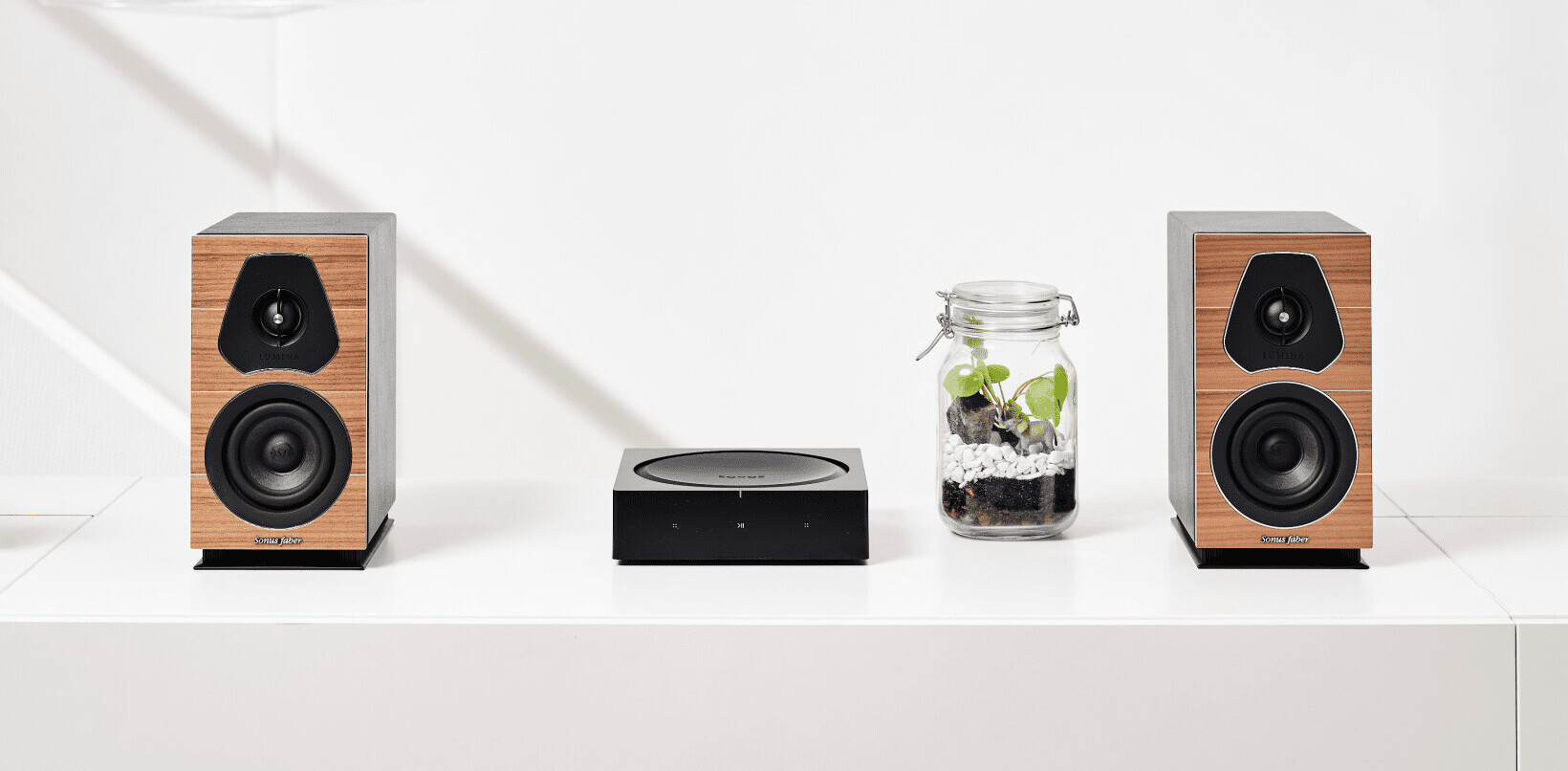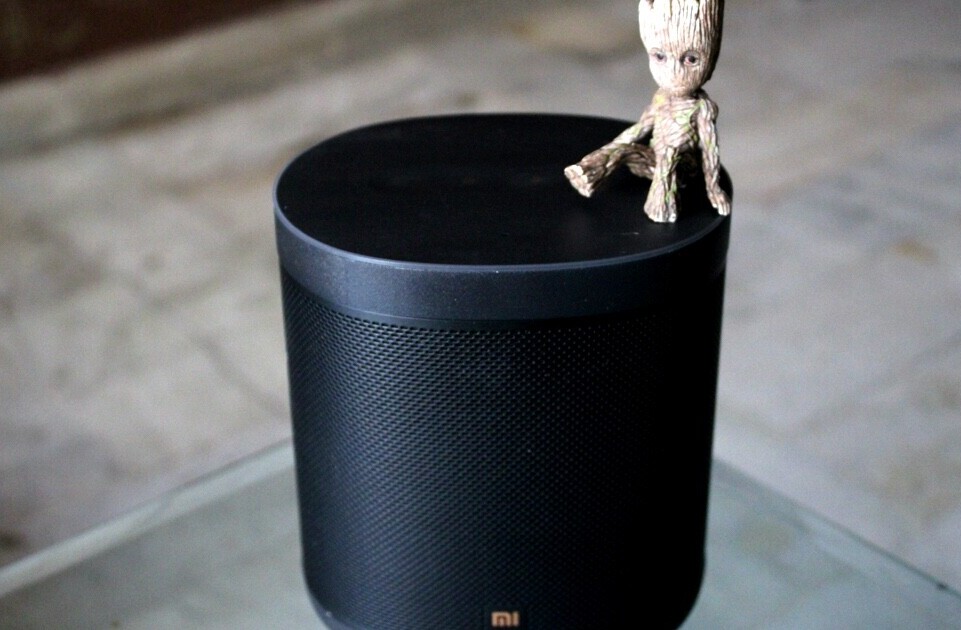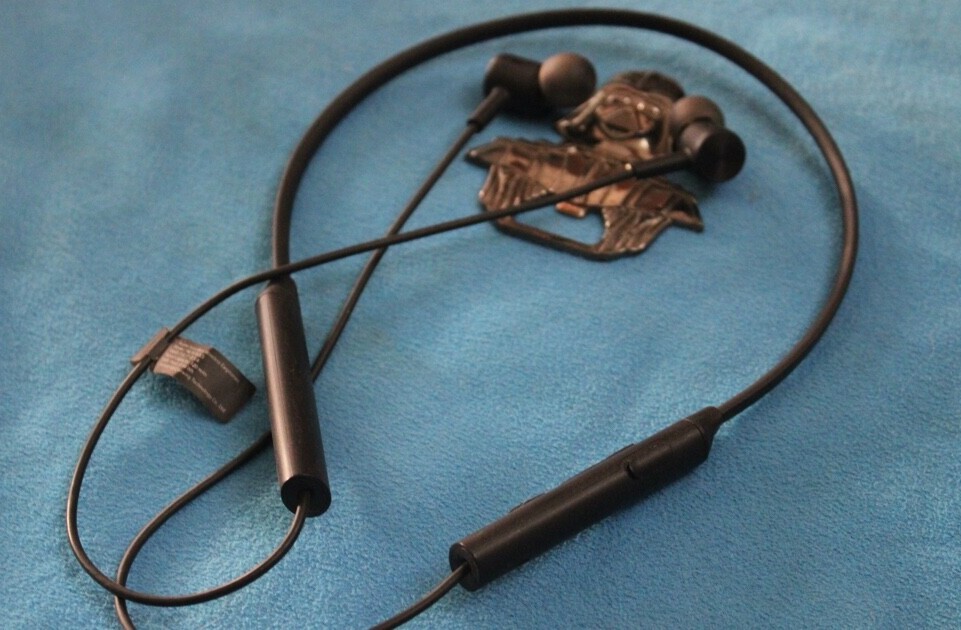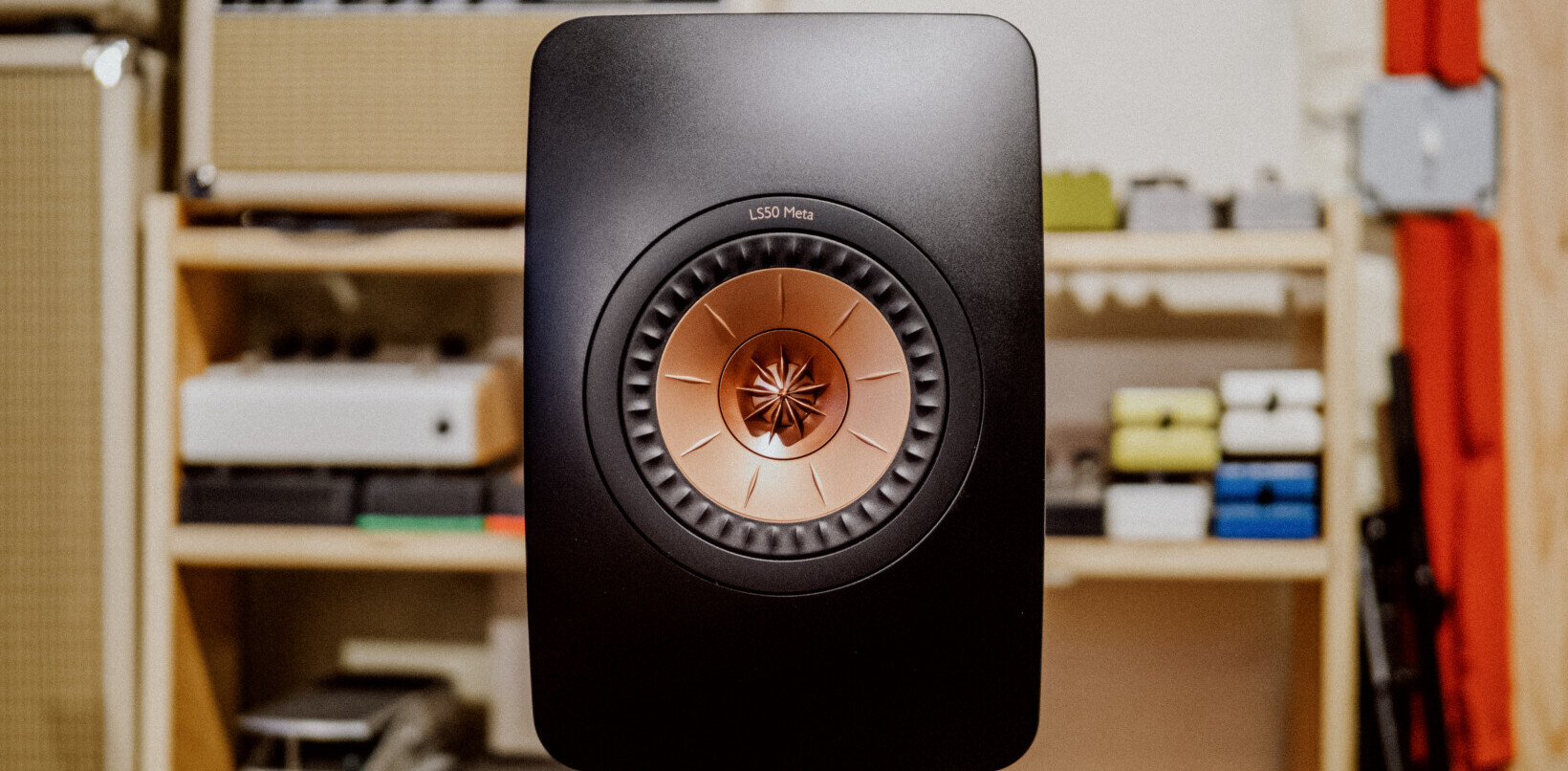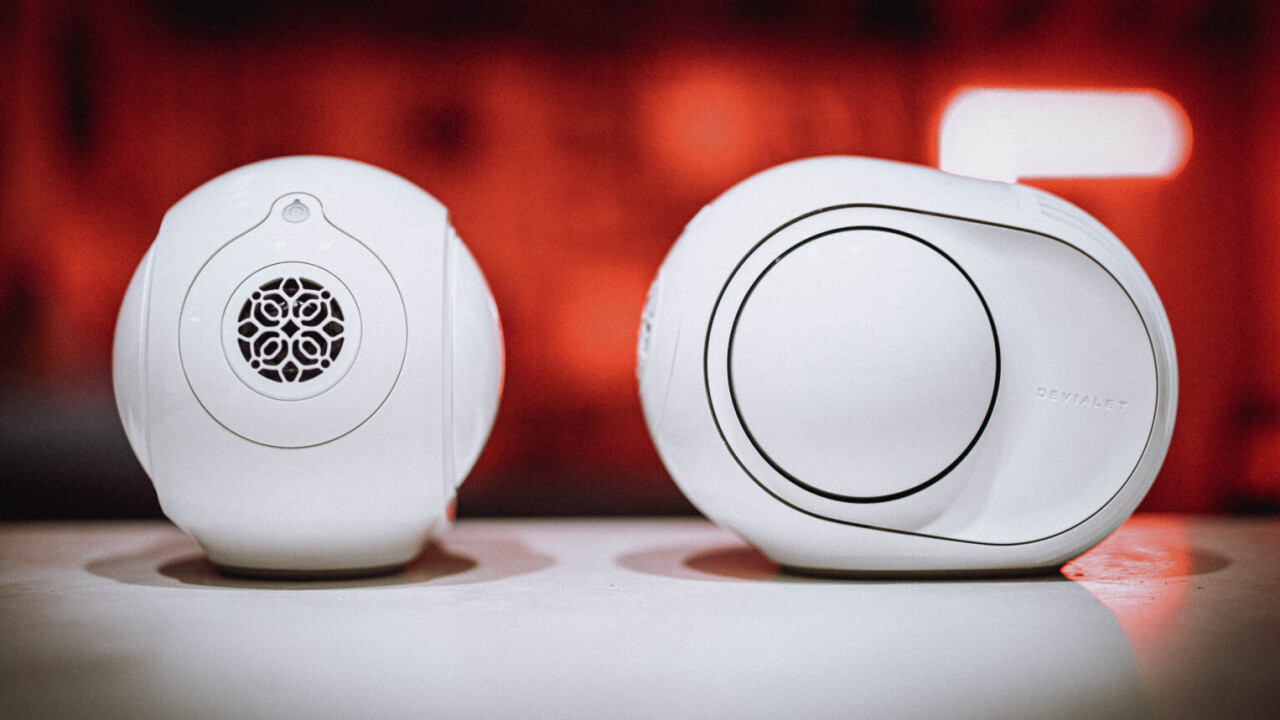
- Product
- Phantom Reactor
- Price
- $$1,090+
I first listened to the minuscule Devialet Phantom Reactors in the company’s New York showroom in late 2018. Back then, I wrote that they were one of the few speakers that have made me think ‘wow’ in a long time. After all, review enough speakers costing thousands of dollars, and you become at least a little jaded about what sounds good and what surprises you.
After spending a few months with the Reactor – starting at $2,180 a pair for 600W, or $2,700 for the 900W model I tested – my enthusiasm only increased. These are speakers meant to wow you, to make you rethink the amount of volume and bass a speaker smaller than an American football can put out. The software is their only real blemish.
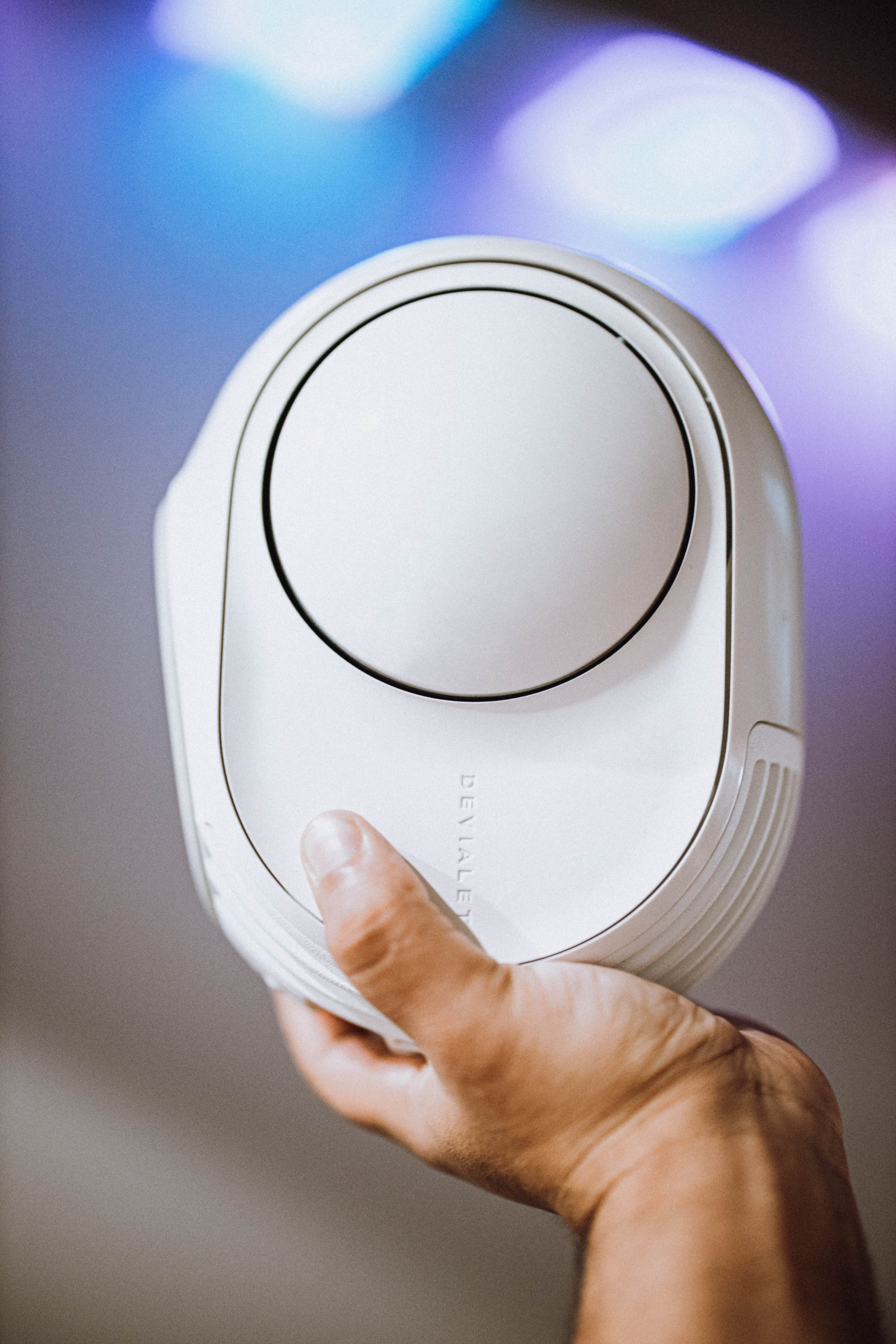
If you follow high-end audio, you’ve probably heard of Devialet before. The company first made waves with its original Phantom (now called the ‘Phantom Premier,’) a speaker that also looked like an alien sculpture and pumped out more bass than a speaker its size had any right to. The Reactor takes everything that was good about the original and shrinks it down, while providing a few changes to make it more user-friendly for the average listener.
Did I mention it’s small? The Reactor 900 measures approximately 17x22x16cm (6.6×8.5×61 inches). That’s just a bit bigger than the Sonos Move, and smaller than the vast majority of bookshelf speakers. It’s small enough to fit on a desk inconspicuously, and even a bit too small for my speaker stands.
Despite this, Devialet claims essentially linear bass extension down to 25Hz, and full extension (-6dB) down to 18Hz. That’s better than most subwoofers, let alone bookshelf speakers, which tend to dip down in the 40s and 50s. As we’ll see in the measurement section, Devialet more than delivers.
Aesthetically, the Phantom’s spherical shape won’t be for everyone, but it should be easy to accommodate with most decor (especially now that it comes in a black colorway too). It strikes a nice balance; it looks different than almost anything on the market, but it’s small enough to not be too conspicuous.
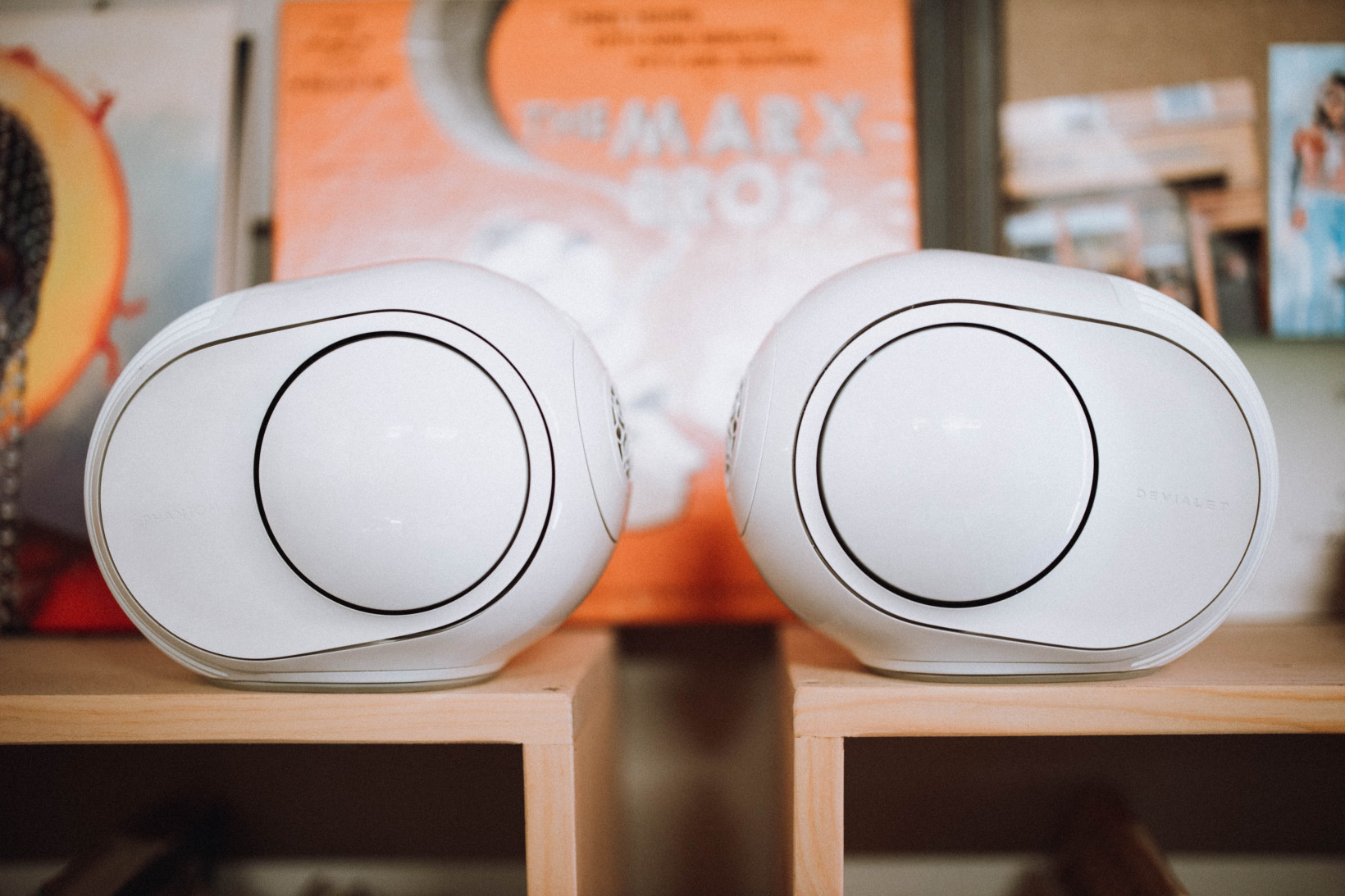
Unlike the original Phantom, the Reactor comes with a few controls on the top that allow you to adjust volume or switch inputs (which now include a standard 3.5mm jack in addition to mini optical and Bluetooth). It’s a welcome change, as previously you were forced to do everything from Devialet’s mobile app.
Another major usability improvement: you don’t need a special accessory to use the speakers in stereo. That’s right: the original required paying an extra $329 for the Devialet Dialog to use in stereo or in a multi-room setup. That’s a thing of the past with the Phantoms.
Unfortunately, the stereo experience still isn’t as reliable as it should be. Setup was easy enough, but I had a few hiccups afterward, including one speaker being substantially louder than the other. It was an issue that recurred every few days, and each time it required restarting the speakers to fix.
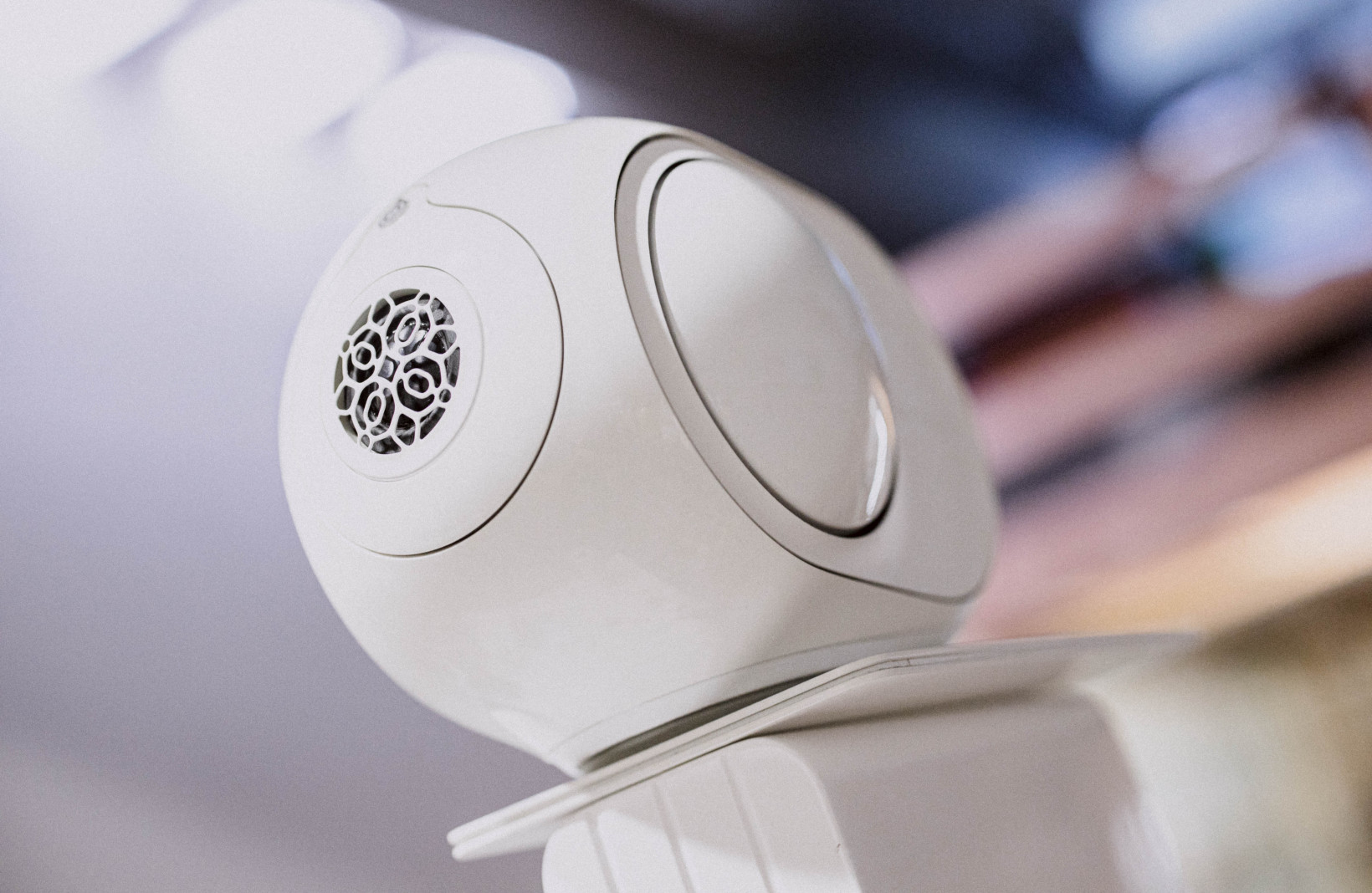
That shouldn’t be happening on a $2,700 pair of speakers in 2020 (okay, I tested them in 2019, sue me). I’ve not had similar issues with other wireless speakers in my home. The only reason I put up with it is that the Reactors sound so darn good.
Sound and measurements
The Reactor is the type of speaker that’s a bit difficult to talk about because it’s sound is so timbrally balanced – it does just about everything right. Despite a lack of a dedicated tweeter – the Reactor uses a single driver to cover everything from about 500 Hz up – its highs are balanced, detailed, refined, and whatever other audiophile terms you want to throw in.
The soundstage they portray is massive – extending well beyond the boundaries of the little speakers themselves in my apartment – while maintaining precise imaging and a stable ‘phantom center’ (that feeling of a vocalist or soloist playing right in midair between the speakers).
But the bass is the star of the show. There’s just so much of it that I can’t help but smile every time I play a track like Beyonce’s Partition, where the sound dives deep into the sub-bass, and which the Reactors handle like nobody’s business. I tried pairing them with my subwoofer, but it was to the Reactor’s detriment. They simply don’t need the help.
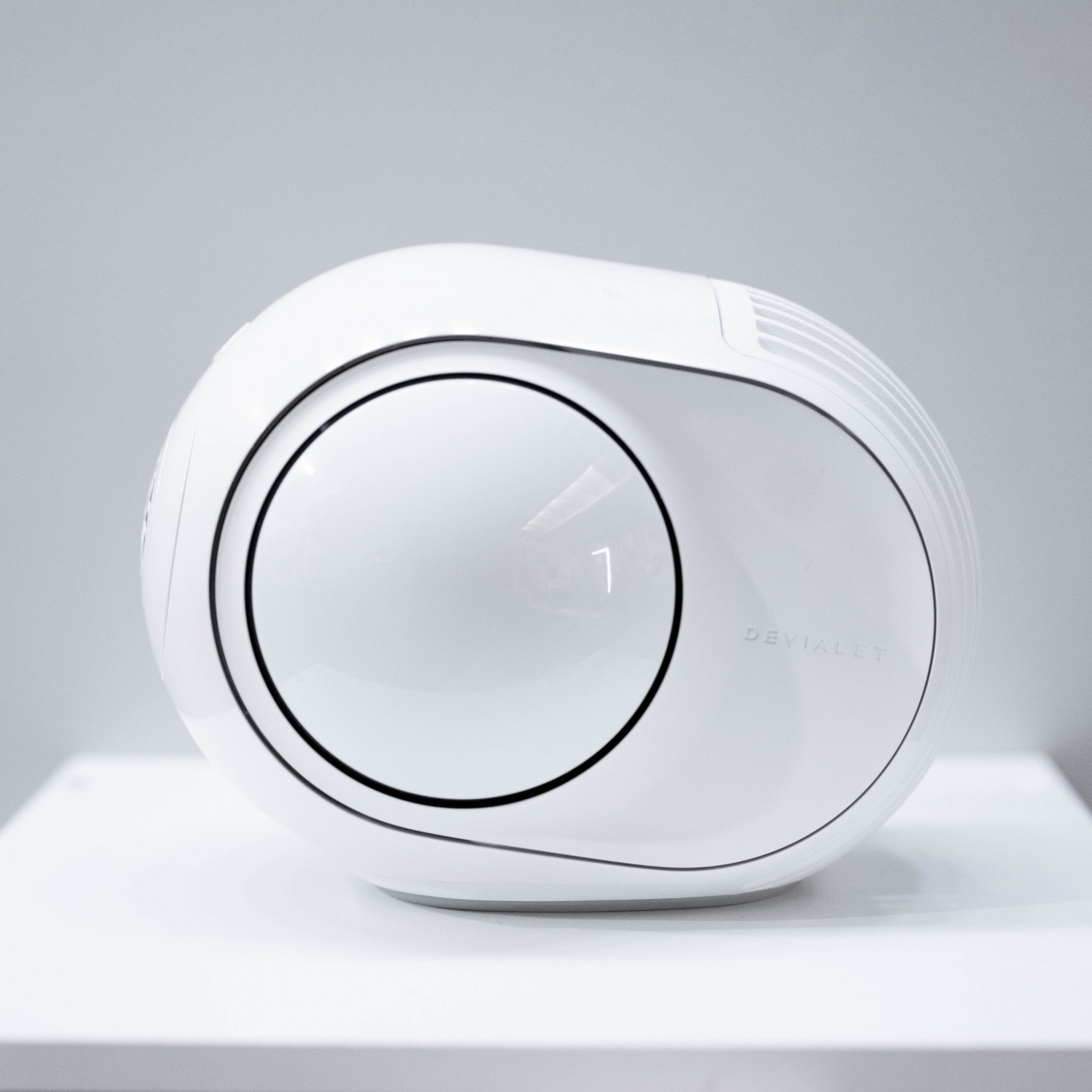
It’s often easy for audiophiles to dismiss app-enabled Wi-Fi speakers as not being “serious” about sound quality, but the Reactos have the measurements to back up my impressions.
As usual, I put the speakers through a series of measurements to quantify their performance, using a quasi-anechoic technique that removes the influence of room reflections on my measurements.
Studies by researchers such as Floyd Toole and Sean Olive tell us that, contrary to popular audiophile belief, most people prefer the same type of sound signature in their speakers: flat. A speaker that measures flat in its forward sound and which radiates smoothly to its sides is almost always preferred to one without these qualities in blind tests. These qualities are readily apparent in the Reactor’s measurements.
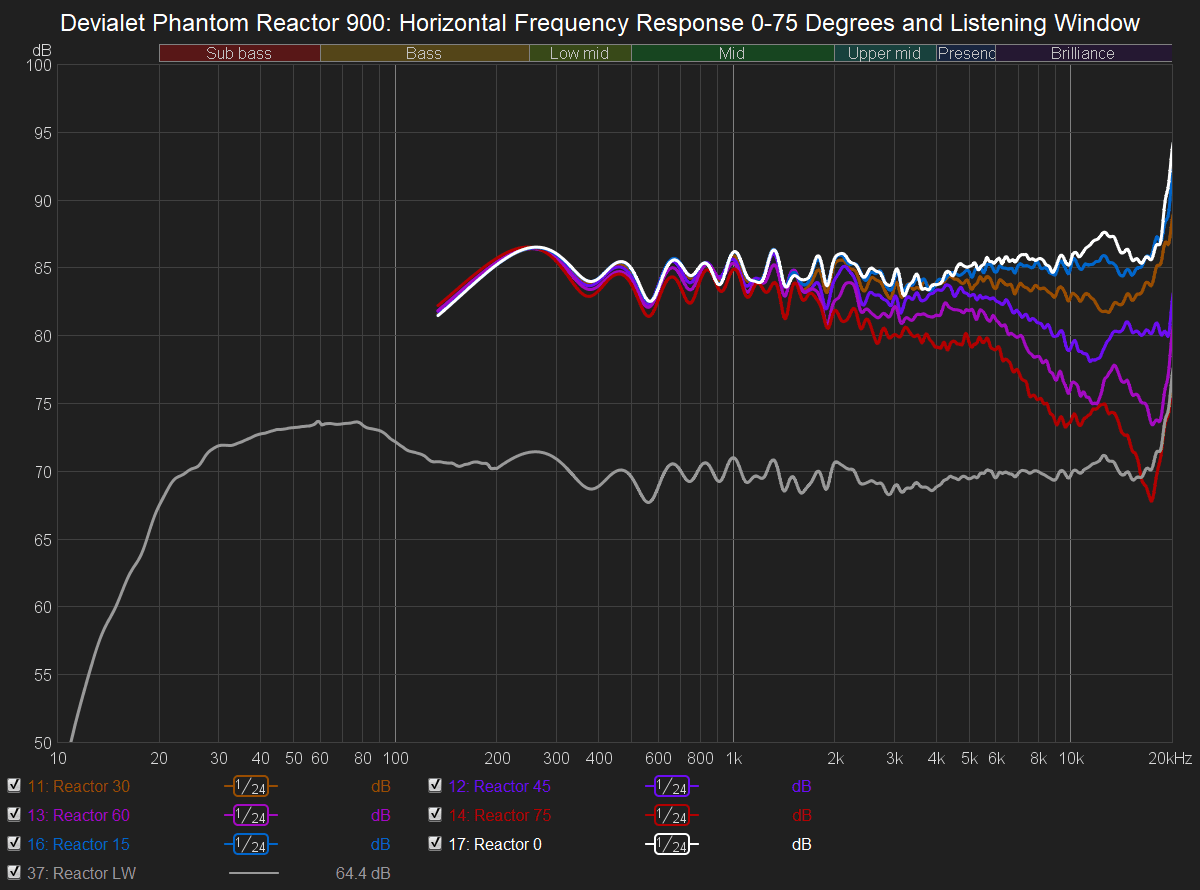
In the graph above, we see how the sound changes as you move off the forward axis in 15-degree intervals. The curve at the bottom is what’s called a Listening Window – an average of measurements made in a 30-degree horizontal and 10-degree vertical measurements – meant to represent the fact most people don’t sit perfectly still or perfectly centered. It’s probably the most important individual curve.
The Reactor performs remarkably. The listening window is superbly flat – flatter than almost any speaker I’ve tested, and flatter even than most studio monitors. You can also see they measure flattest about 15-degrees off-axis, so you don’t need to point them right at your listening position. If it weren’t for the Reactor’s latency bit of latency, I’d say you should be mixing your next album on them.
You can also see how the response changing smoothly as you reach further to the sides, without any major discontinuities. It maintains ample energy up to about 6KHz. This all suggests an expansive, stable soundstage. And because of the speaker’s spherical shape and vertical symmetry, it measures virtually identically in the vertical axis (a rare feat, most speakers show some weakness here).
One small note not shown above: make sure to position the speakers such that their base is all the way forward on whatever surface you place them on. The front should “protrude” a few inches.

When I first measured the Reactors and positioned them as shown in the image on the left, they showed a large scoop or suckout in the frequency response around 3 kHz (there’s a small one still, but it was much larger my first go). I suspect this has something to do with the quasi-spherical enclosure allowing the wavefront to “wrap” around the speaker. The enclosure shape aids in off-axis radiation, but as originally positioned, it also caused an unwanted reflection and cancellation off my stand. This could have a noticeable effect on the sound; if left with the scoop in the frequency response, they could sound a bit dull. Repositioning the speakers as shown on the right promptly fixed the issue.
Putting it all together is a measurement standard called the CTA-2034-A. More colloquially it’s called a ‘Spinorama’ because it involves rotating the speaker around its horizontal and vertical axes to capture its radiation in all directions. I don’t have an anechoic chamber to make the measurements completely kosher, but these should still provide a good idea of how the speaker performs. The data is largely made up of the same data I presented above, but averaged into a more digestible form:
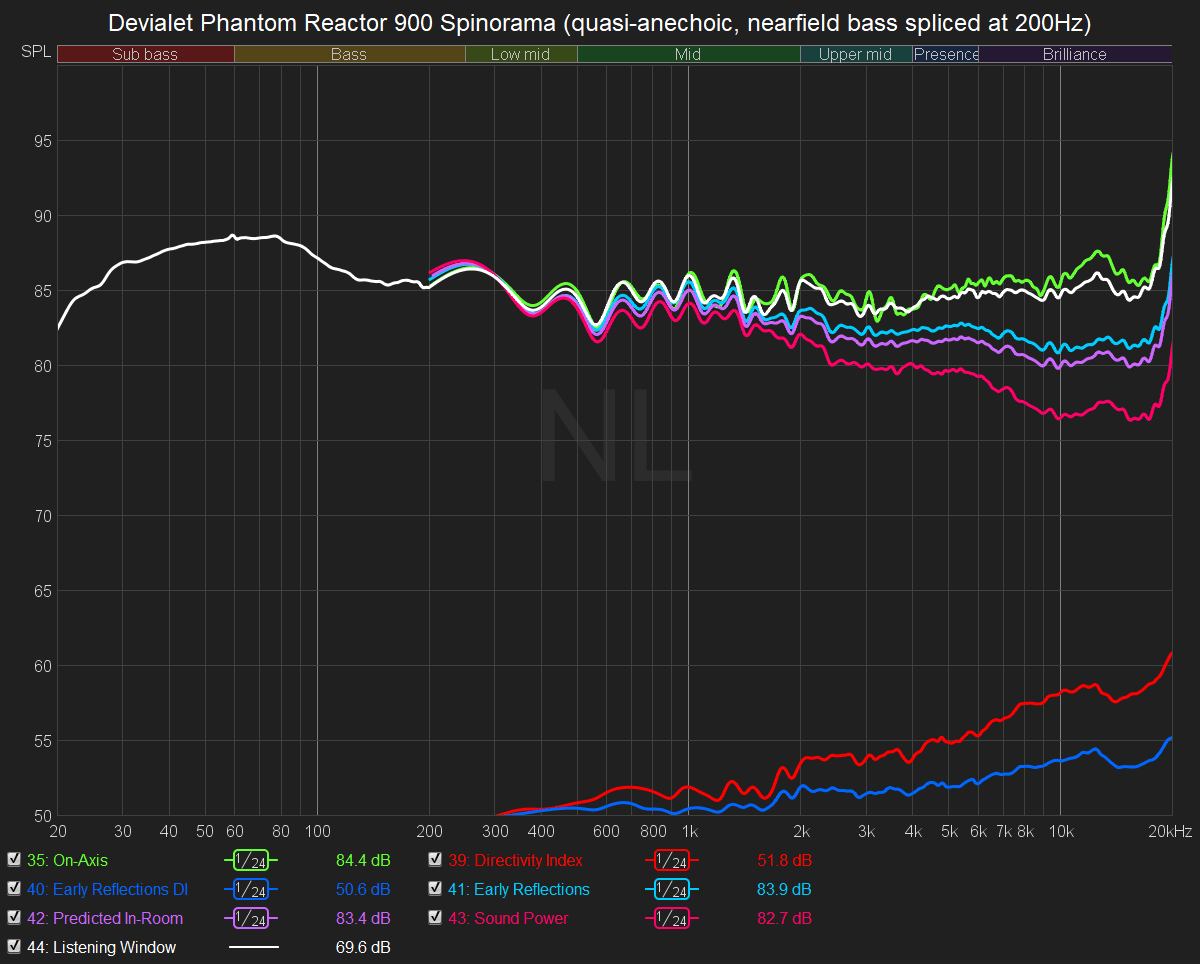
Here we see the on-axis and listening Window curves again, as well as some new ones. In blue we see the Early Reflections curve, which might be the most important curve in a typical living room setup other than the Listening Window. It’s an average of several horizontal and vertical angles – mostly in the front hemisphere – deemed to be perceptually important. This is because a speaker’s sound is colored by both the direct sound as well as the first reflections to hit our ears.
The Predicted In-Room curve in purple is just what it sounds like. It’s the predicted response if we were to measure from the listening position in a room. It usually closely tracks the early reflections curve, as seen here. We want this curve to tilt down as shown here – we perceive a tilt of about 8-10 dB as neutral in a typical home setup.
The Sound Power curve, meanwhile, represents how the speaker radiates sound in all directions, but isn’t as important as the orther curves for standard speakers that mostly radiate sound forward (as opposed to say an omnidirectional Bluetooth speaker).
At the bottom are the two Directivity Index curves. These are taken by subtracting the Early Reflections Curve and Sound Power curve from the Listening Window. As such, they represent the speaker’s directivity – how much it radiates sound forward at various angles. Most speakers will tend to become more directive as the frequency increases, as shown here.
Some people prefer speakers that radiate narrowly – represented by a steeper slope on these curves – which often means a sharper soundstage. Others, like me, prefer wider directivity, which tends to create a more expansive soundstage with a wider sweet spot, at the expense of sounding a bit more diffuse. The Reactor is in the latter camp, but either way, the main qualitywe want these is for these curves to be smooth – discontinuities suggest an unbalanced soundstage. The only issue is above 10KHz, but most people aren’t terribly sensitive in this region.
I have almost nothing to complain about the Reactor’s performance. If anything, its only real problem is that it has too much bass. That bump in the bass suggests the Reactors will have too much energy from roughly 20 to 100Hz.
This might not be a problem if it weren’t for the fact that in a typical home setup, bass gets reinforced by proximity to the walls. It’s a shame then, that Devialet does not have a way to EQ the bass down in its app. I would recommend doing so via other means if possible, such via your AV receiver if you’re using these with your TV, or an EQ app with your PC. Otherwise, try to keep them a few feet from the walls.
It’s also worth noting that when speakers use DSP to enhance extend bass performance – as the Reactors do – they usually introduce volume limits to the bass in order to protect the drivers. The Reactor 900 is no different.
This graph represents both speakers firing at once at various volume levels, as measured from my listening position 10 feet away. The speakers were 1-2 feet from the rear wall, giving them significant bass reinforcement they didn’t need. The purple curve is at maximum volume.
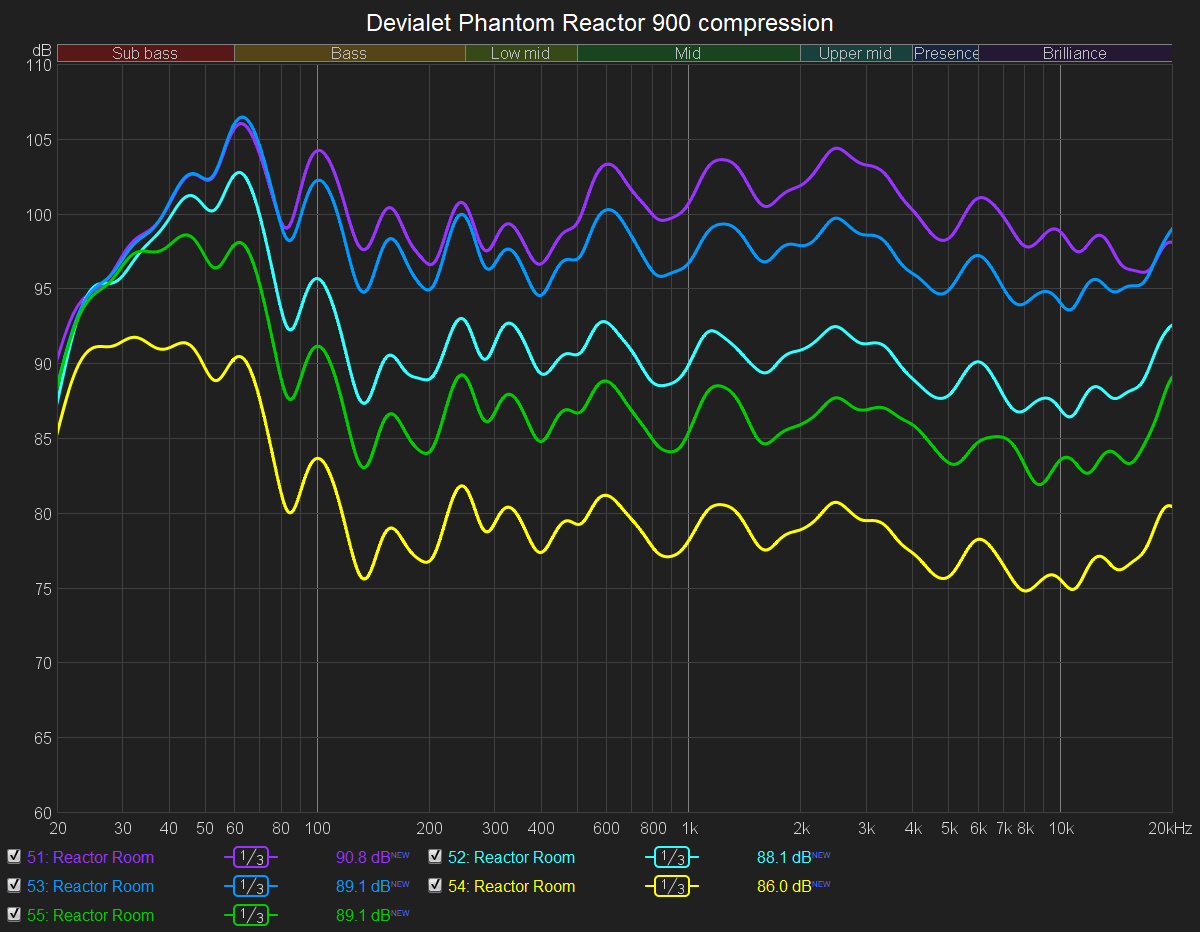
You can see that the sub-bass starts to become limited below 60Hz above 95dB or so. This is a good result. 95dB in a home is very loud. My typical listening levels are below 75dB. The limiting is also exclusive to below 60Hz, so you’ll still get a fair amount of bass even at max volume. Still, it might be something to keep in mind if you have a very large listening room and you really like to pump up the volume.
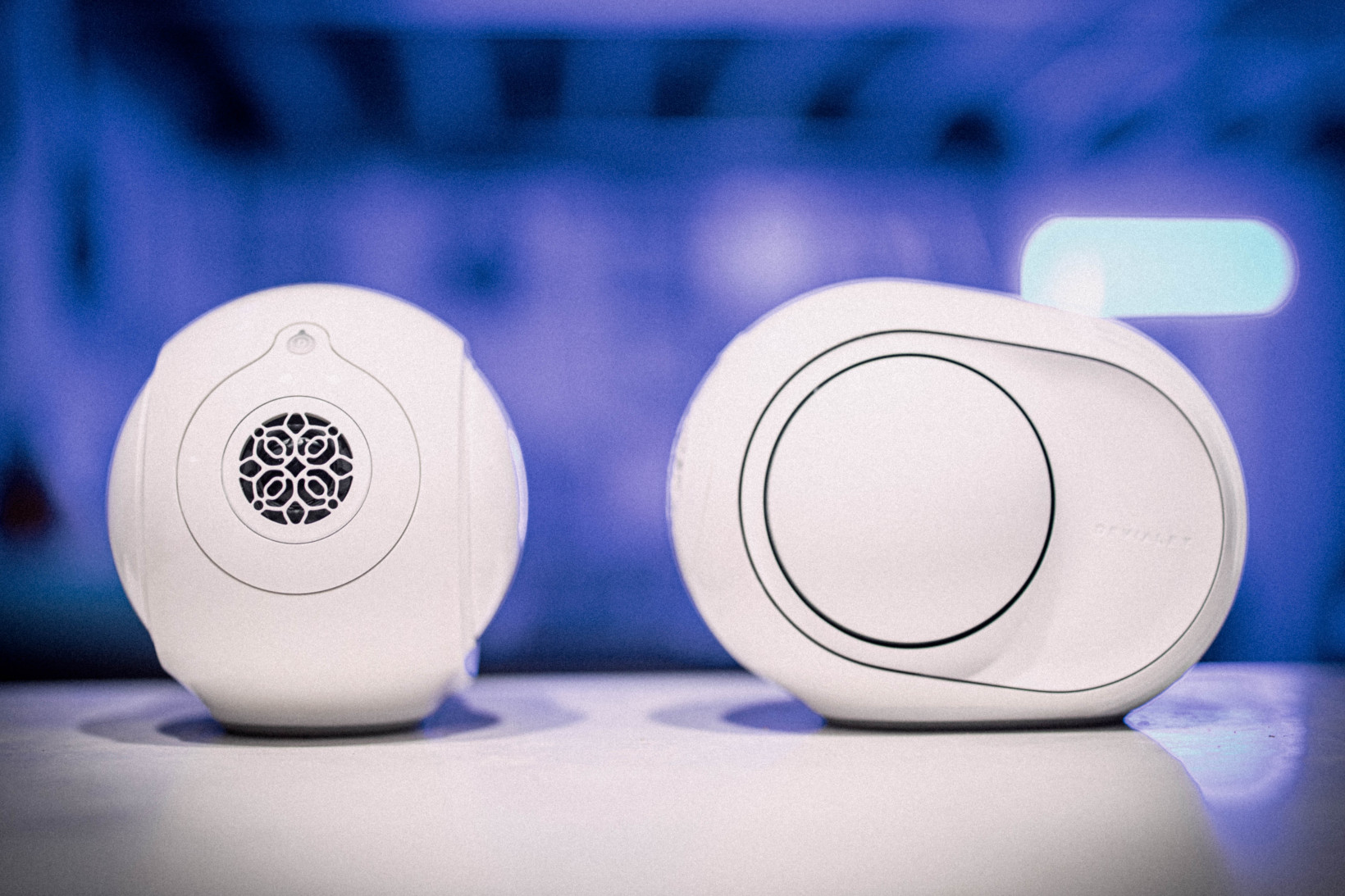
The Devialet Phantom Rector is a speaker unlike anything else on the market. It looks cool, it sounds fantastic, and it’s absolutely tiny. In terms of acoustic performance, it’s more than competitive with hi-fi favorites like the KEF R3 and Buchardt S400, especially if you don’t have a subwoofer.
$2,700 for a pair is pricey, but if you don’t listen very loud or from afar, I’d go with the cheaper Reactor 600 ($2380) – which would have more than sufficed for my needs. It’s a shame Devialet’s software isn’t as good as its acoustic performance, but if you put sound first, the trade-off is probably worth the bugbears. As a full range, compact, all-in-one sound system, it’s hard to beat what Devialet is offering.
This post contains affiliate links to products you can buy online. If you purchase a product using one, TNW gets a small cut of the revenue.
Get the TNW newsletter
Get the most important tech news in your inbox each week.
